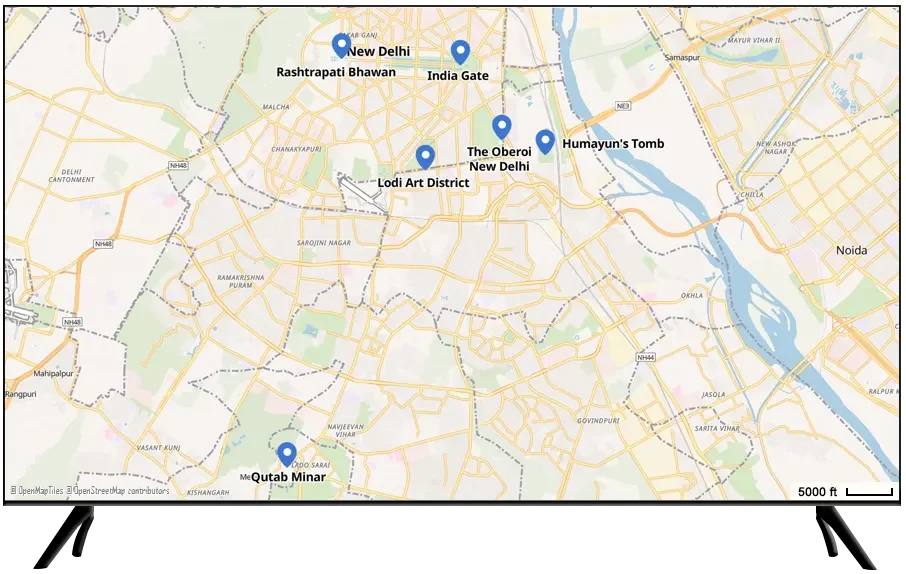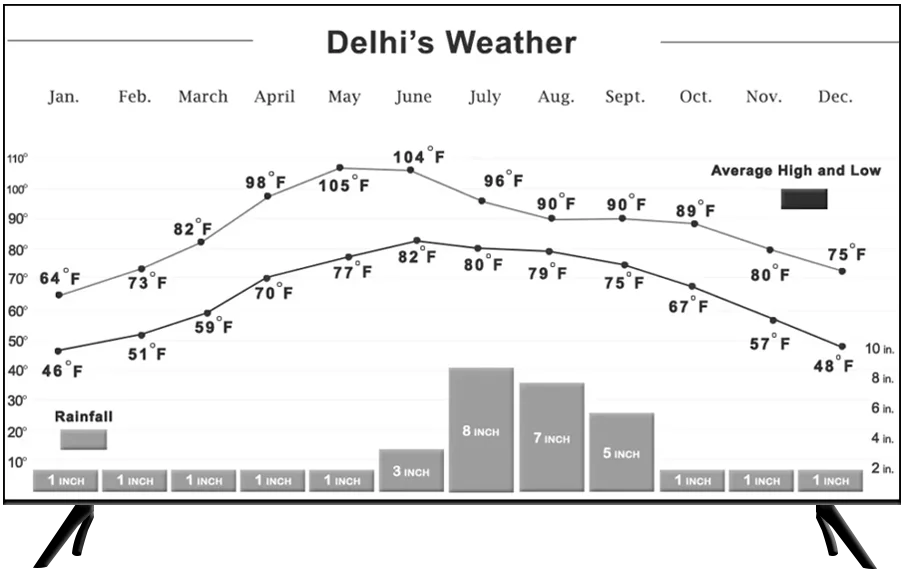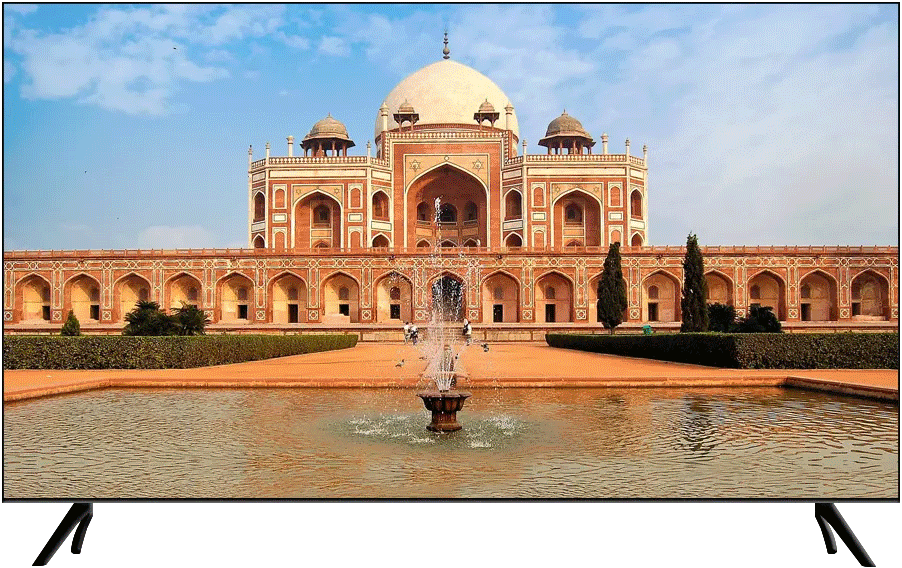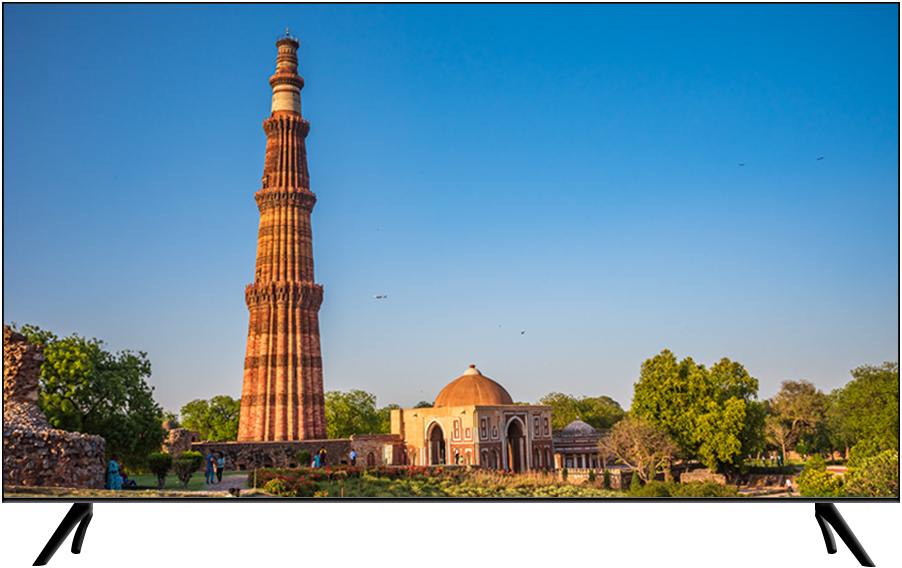



Day 2. Delhi
Overnight – The Oberoi New Delhi
Begin your exploration of New Delhi with a drive through some of Lutyens’ historic New Delhi. You will stop for a view of the exterior of the massive and awe-inspiring Rashtrapati Bhawan, which was known as the Viceroy’s House during the British era. From here you can also enjoy a striking view of the India Gate at the other end of majestic and historic Rajpath, the former Kingsway.
After a very short drive on Rajpath you will arrive at the India Gate, a War Memorial to the 84,000 British Indian Army soldiers who lost their lives in the First World War, and Indian casualties in other wars. You will learn a little about the magnificent structure, which is often compared to the Arc de Triomphe in Paris. Explore the gardens and monuments around the area.
Continue your exploration of Delhi after a 5-minute drive to the magnificent tomb of the Mughal Emperor Humayun. Delhi has such an abundance of amazing monuments that this Tomb Complex (1562 A.D.) does not quite get the acclaim that it deserves. It is one of Delhi’s three UNESCO World Heritage Sites and its striking beauty and flawless proportions will captivate you.
From here you will be driven through a section of Connaught Place, which is New Delhi’s downtown and still retains its colonial architecture and design. Arrive at the Bangla Sahib Gurudwara, which is a large gold domed Sikh House of Worship and is the most prominent Gurudwara in Delhi. It was first built as a small structure in 1783 and then expanded over the next few decades. The campus includes the temple, a kitchen, a school, an art gallery, and the Sarovar (Holy Tank) whose water is called Amrit (Holy Nectar). As with all Sikh Gurudwaras, volunteers, including children and the elderly, the extremely wealthy and not so well-off perform almost all the chores required to keep the Gurudwara functioning. A fascinating part of this is the daily langar (community meal), and you will witness as thousands of meals are served to all visitors who want one, regardless of race, religion, gender or belief. Only vegetarian food is served, so that no religions dietary restrictions are violated. Lunch will be on the way to your next destination at a very good restaurant located in an upscale hotel.
After lunch you are driven to the awe-inspiring 12th century Qutab Minar, a UNESCO World Heritage Site. Delhi has over 500 ancient structures strewn over its vast expanse, with many of them in various states of disrepair. For mankind’s achievements from about a millennium ago, the Qutab Minar is unmatched in its architectural brilliance and longevity. This 240 ft tall medieval tower is a symbol of victory and a spectacular example of Persian architecture, with intricate carvings and gorgeous inlaid calligraphy.
Within the Qutab complex, amidst the ruins of the Quwat-ul-Islam Mosque, stands the legendary 2500-year-old Iron Pillar. The pillar stands 23 feet and 8 inches tall, weighs about 7000 pounds, and has inscriptions that are still legible to a great extent. This massive cast iron structure is said to have been moved from its distant cave shelter to Delhi around the 12th century.
After the Qutab complex, you are driven to the beautiful Lodi Gardens. This massive garden complex is spread over 90 acres of priceless real estate in the heart of Delhi, and contains the tombs of various rulers of the Pashtun Dynasty that ruled much of Northern India during the 16th century. There are lush lawns and a plethora of flowers and plants mixed in with all the monuments.
Very near the gardens is the Lodi Art District, your last destination before returning to your hotel. Delhi isn’t famous for its street art and murals, and the large amount of street art found all over this upscale part of the city will both surprise and delight you. The subject matter ranges from quirky to distinctly ethnic Indian and there will be surprises around every corner. A google presentation on the Lodi Art District – https://artsandculture.google.com/exhibit/lodhi-art-district-st-art-india/NQKi787tb1GHJA?hl=en.
Begin your exploration of New Delhi with a drive through some of Lutyens’ historic New Delhi. You will stop for a view of the exterior of the massive and awe-inspiring Rashtrapati Bhawan, which was known as the Viceroy’s House during the British era. From here you can also enjoy a striking view of the India Gate at the other end of majestic and historic Rajpath, the former Kingsway.
After a very short drive on Rajpath you will arrive at the India Gate, a War Memorial to the 84,000 British Indian Army soldiers who lost their lives in the First World War, and Indian casualties in other wars. You will learn a little about the magnificent structure, which is often compared to the Arc de Triomphe in Paris. Explore the gardens and monuments around the area.
Continue your exploration of Delhi after a 5-minute drive to the magnificent tomb of the Mughal Emperor Humayun. Delhi has such an abundance of amazing monuments that this Tomb Complex (1562 A.D.) does not quite get the acclaim that it deserves. It is one of Delhi’s three UNESCO World Heritage Sites and its striking beauty and flawless proportions will captivate you.
From here you will be driven through a section of Connaught Place, which is New Delhi’s downtown and still retains its colonial architecture and design. Arrive at the Bangla Sahib Gurudwara, which is a large gold domed Sikh House of Worship and is the most prominent Gurudwara in Delhi. It was first built as a small structure in 1783 and then expanded over the next few decades. The campus includes the temple, a kitchen, a school, an art gallery, and the Sarovar (Holy Tank) whose water is called Amrit (Holy Nectar). As with all Sikh Gurudwaras, volunteers, including children and the elderly, the extremely wealthy and not so well-off perform almost all the chores required to keep the Gurudwara functioning. A fascinating part of this is the daily langar (community meal), and you will witness as thousands of meals are served to all visitors who want one, regardless of race, religion, gender or belief. Only vegetarian food is served, so that no religions dietary restrictions are violated. Lunch will be on the way to your next destination at a very good restaurant located in an upscale hotel.
After lunch you are driven to the awe-inspiring 12th century Qutab Minar, a UNESCO World Heritage Site. Delhi has over 500 ancient structures strewn over its vast expanse, with many of them in various states of disrepair. For mankind’s achievements from about a millennium ago, the Qutab Minar is unmatched in its architectural brilliance and longevity. This 240 ft tall medieval tower is a symbol of victory and a spectacular example of Persian architecture, with intricate carvings and gorgeous inlaid calligraphy.
Within the Qutab complex, amidst the ruins of the Quwat-ul-Islam Mosque, stands the legendary 2500-year-old Iron Pillar. The pillar stands 23 feet and 8 inches tall, weighs about 7000 pounds, and has inscriptions that are still legible to a great extent. This massive cast iron structure is said to have been moved from its distant cave shelter to Delhi around the 12th century.
After the Qutab complex, you are driven to the beautiful Lodi Gardens. This massive garden complex is spread over 90 acres of priceless real estate in the heart of Delhi, and contains the tombs of various rulers of the Pashtun Dynasty that ruled much of Northern India during the 16th century. There are lush lawns and a plethora of flowers and plants mixed in with all the monuments.
Very near the gardens is the Lodi Art District, your last destination before returning to your hotel. Delhi isn’t famous for its street art and murals, and the large amount of street art found all over this upscale part of the city will both surprise and delight you. The subject matter ranges from quirky to distinctly ethnic Indian and there will be surprises around every corner. A google presentation on the Lodi Art District – https://artsandculture.google.com/exhibit/lodhi-art-district-st-art-india/NQKi787tb1GHJA?hl=en.

